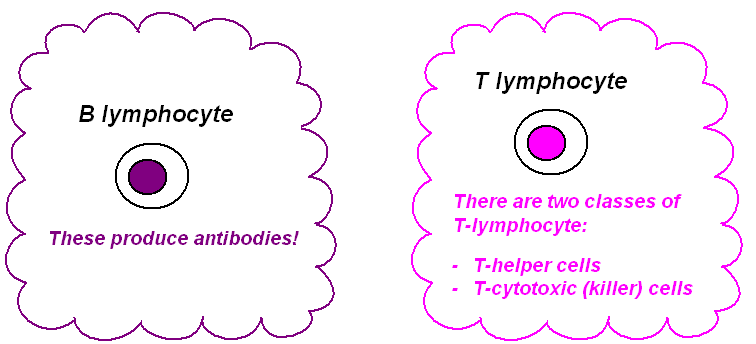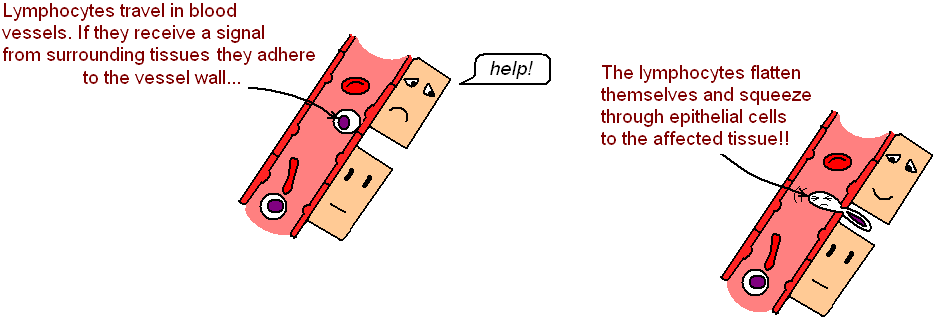
The adaptive immune system produces a slower response than that of the innate immune system, but the response is highly specific. It also has a wonderful memory, thereby mounting a much faster immune response to microbes previously encountered! If you still think you'd be more interested in the innate immune system, it's not too late! Just click here!
The cells of the adaptive immune system are, of course, lymphocytes!!

There's an easy way to remember where the two types of lymphocytes mature...
The B-lymphcytes mature in the Bone!
The T-lymphocytes mature in the Thymus!
Lymphocytes live in lymphoid organs, but they also patrol the bloodstream looking for trouble...

Lymphocytes are always specific for just ONE antigen. (An antigen is the foreign substance on the surface of an invading organism). When a new invading organism arrives in the body, the correct lymphocyte must be selected, then it must divide to produce lots of identical lymphocytes. This is called CLONAL SELECTION:
B-lymphocytes mature into plasma cells, which produce huge quantities of antibodies (immunoglobulin). These eliminate or neutralise the antigen.
Memory cells remain in the body for years so if the same antigen is regognised in the body again, more of the specific lymphocytes will be stimulated. This is the basis of immunological memory.The secondary immune response is larger and faster than the primary immune response. Also, the antibodies produced by plasma cells are primarily IgG, rather than IgM.
Some T-helper lymphocytes (Th1) activate macrophages, some (Th2) are involved in B-lymphocyte differentiation and maturation.
Cytotoxic T-cells attack cells presenting "MHC Class I" molecules. (Major Histocompatability Complex) They have granules containing cytolytic substances such as perforins and proteases. These granules release perforins first, to punch holes in the target cell's plasma membrane. These pores allow the nasty proteases to enter the target cell, inducing apoptosis (programmed cell death)! The target cell can then be gobbled up by phagocytes. Simple!!